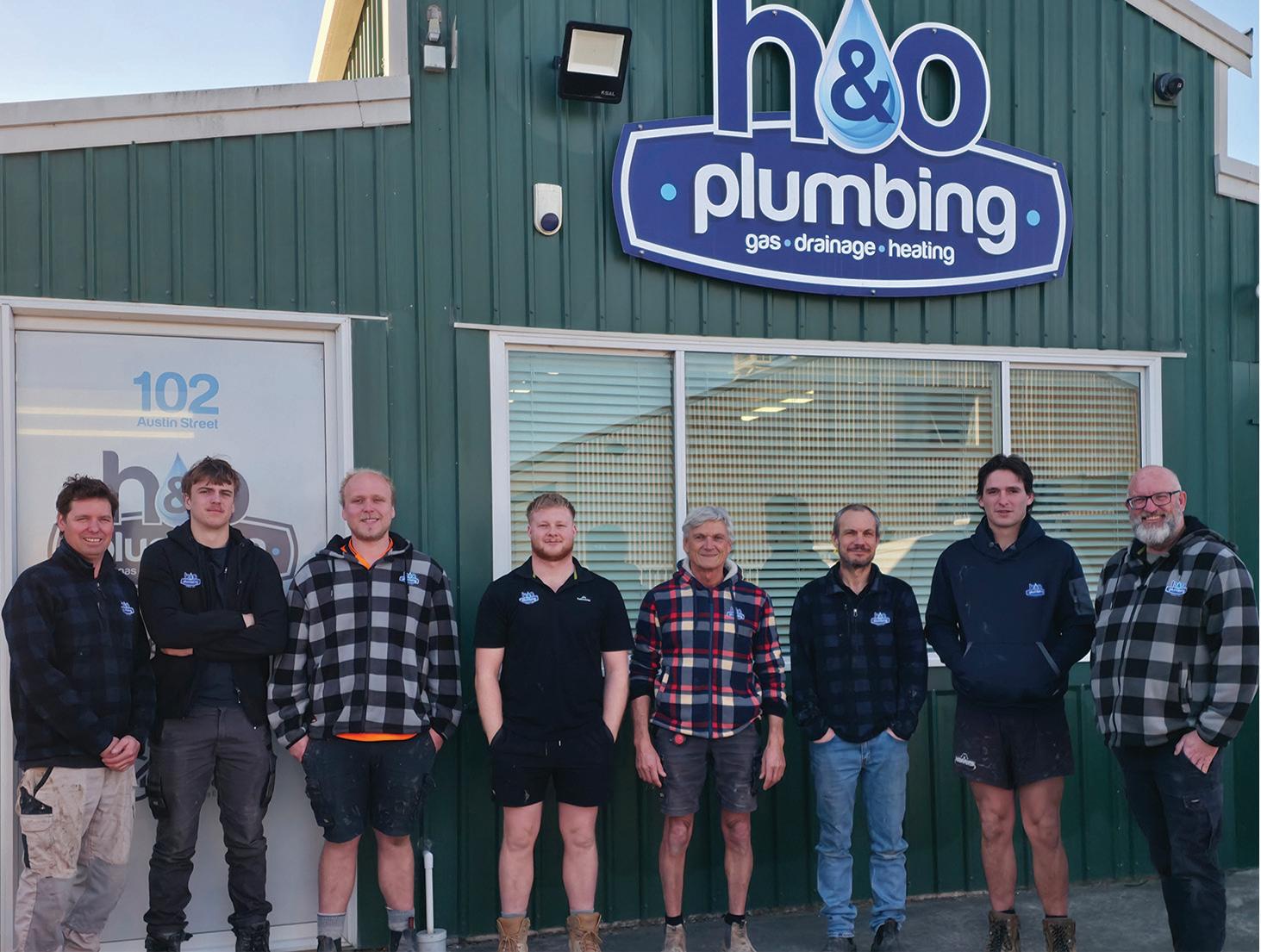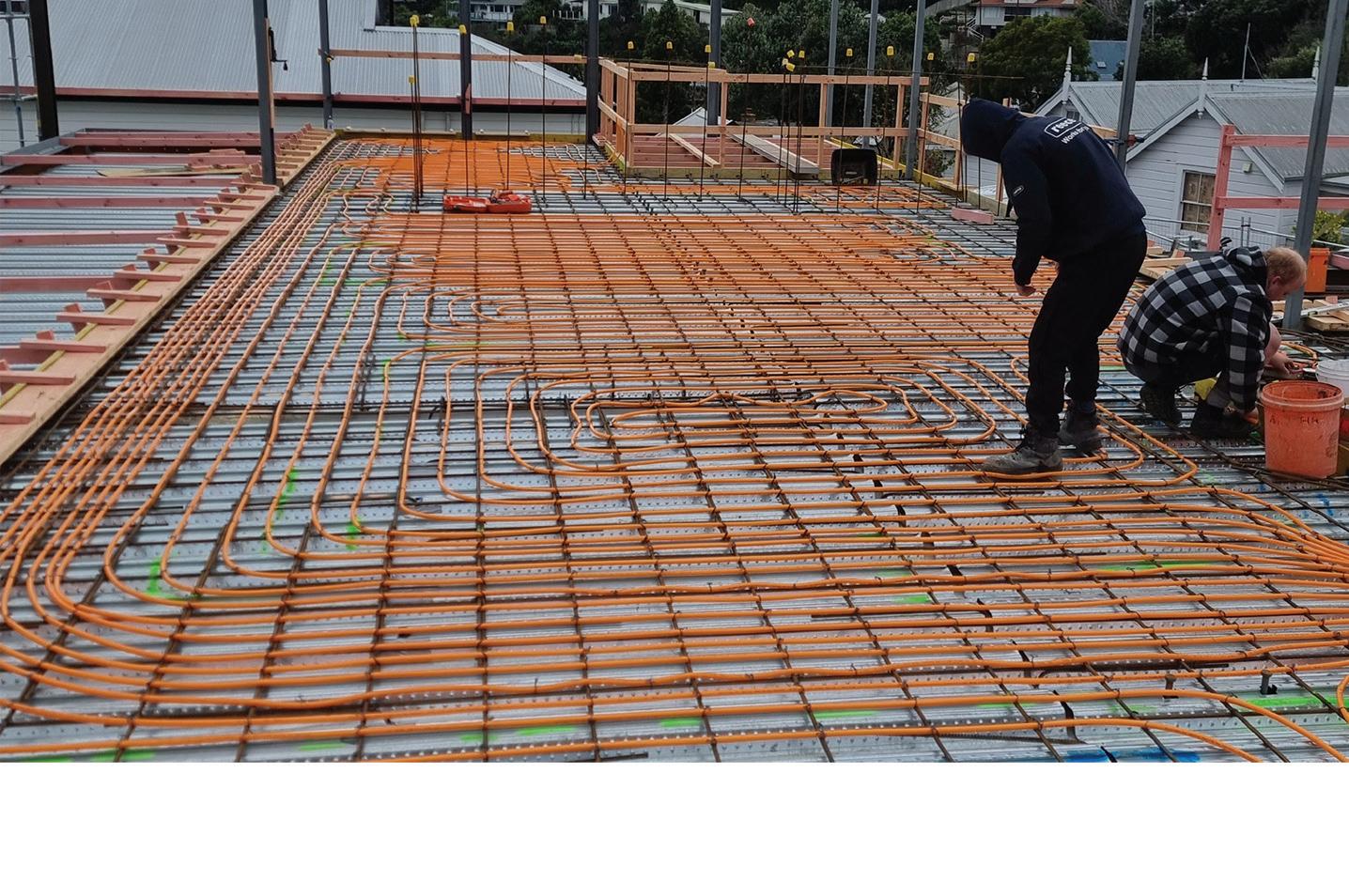

Your Dedicated & Knowledgeable Lawyers in Hastings

What We Do
Based in Hastings, Hawkes Bay, our experienced lawyers and legal support staff offer dedicated and knowledgeable advice on the most important legal issues our clients encounter. Whether you need help with anything from property transactions to wills and powers of attorney, commercial and company law, we have got you covered. Please contact us and let us know about your query and how we can help you. We will ensure our legal team provides the assistance you need, at the time you need it.
Why Choose DK Legal
A Hastings law firm for the future
Your local Hawke’s Bay & Hastings lawyers providing advice throughout New Zealand
Our vision at DK Legal Limited is to provide dedicated and knowledgeable legal services that are available to assist our clients in seizing opportunities, solving problems and providing peace of mind when it matters. We can assist with a wide range of legal issues - servicing all of Hawke’s Bay and the rest of New Zealand from our Hastings offices. Our professional team of lawyers are ready to tackle any legal matter that is concerning you.
Our focus is to provide law services with our young, enthusiastic and knowledgeable team. Each of our team members has helped numerous clients throughout New Zealand and is here to help many more. Our main drive has always been our clients and their wellbeing - That’s why we are the right law firm that you can always count on!









Fusion Joinery
At Fusion we cover all internal joinery and cabinet making attributes.
We can also help in commercial building projects from shop fitouts and hair salons to restaurants and medical facilities. We are proud to support local feel-good projects like LifeBox as well as providing sponsorship to other worthy causes.


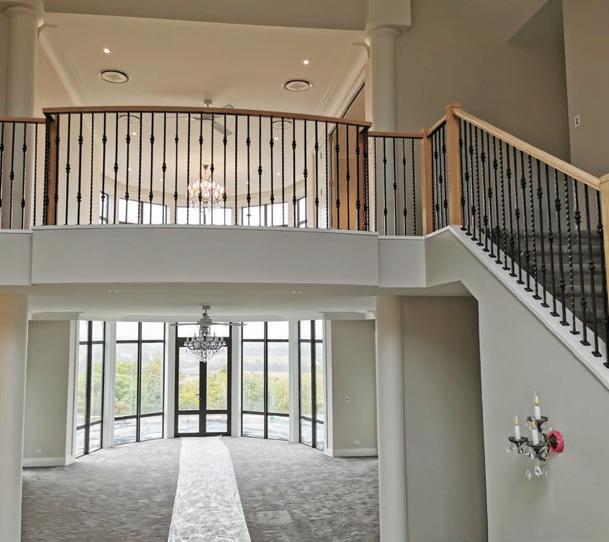


From the Group Editor
Welcome to this edition of Plusliving, where we’re diving deep into the theme of getting the retirement you truly deserve.
Retirement is no longer a quiet end — it’s a chapter rich with possibility, reflection, and, yes, new challenges. With living costs rising and retirement savings under pressure, many are asking the hard questions about financial security and planning. In this issue, we explore what it takes to navigate these shifting tides with confidence.
Elsewhere Look out for our “Live Longer, Live Better” stories - dedicated to finding practical ways to boost health, movement, and mindset as we age. You’ll find insights on Japanese walking and even the science behind spontaneity and how it supports brain and emotional health. It’s all about sustainable habits that make a meaningful difference — at any stage of life.

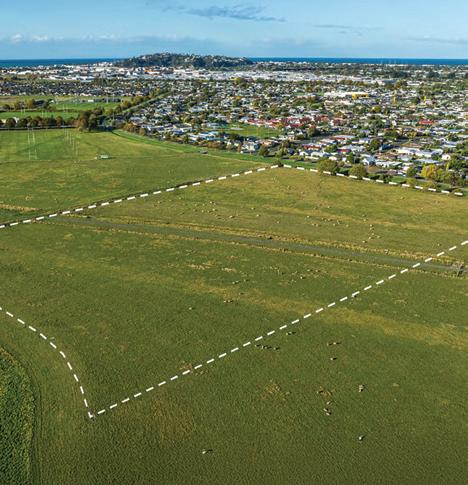


Group Editor 021 676 320 | stuart@academgroup.co.nz









Welcome to Plusliving – the magazine dedicated to living well and ageing gracefully in modern society. Aimed at the 50+ age group, you’ll find articles covering all aspects of contemporary life, including physical health and wellbeing, mental health and acuity, home life, working life and finances, technology, travel, self-improvement and more. Our aim is to provide information anyone can use, on any given day, so you can get more out of life.
Publisher: The Job Agency Ltd 38 Lowe Street, Addington, Christchurch 8011
Managing Director: Gary Collins
GM of Operations: Kylie Palermo
Sales Manager: Angela Elley (03) 961 5184 | sales@markat.co.nz
Art Director: Jarred Shakespeare (03) 961 5088 | jarred@markat.co.nz
Design: Jessica Ann
Product Coordinator Manager: Amber Mundy (03) 961 5075 | amber@markat.co.nz
Accounts: (03) 961 5050 | accounts@markat.co.nz
Disclaimer
the
of
or
2020 by The Job Agency Ltd.




Lifestyles
By Jamie Quinn

Darby Armchair
Upgrade your living room with this mid-century modern chair. Its sleek silhouette, subtle curves, and tapered wooden legs add a touch of chic sophistication while creating a light and airy feel in your space.
RRP $1099.00 www.targetfurniture.co.nz
Design Republique Sophia Ribbed Faux Fur Throw

Elevate your interior design with the luxurious Sophia Ribbed Faux Fur Throw in chocolate brown. This cosy blanket is the perfect accent piece to add a touch of elegance and warmth to your living room.
RRP $149.90
www.bedbathandbeyond.co.nz



Hadley Spiced Berry Check Cushion
Breathe new life into your living space with the Hadley Check Cushion. This fun accent piece is the perfect pick-me-up for any sofa or armchair in need of a refresh. This beautifully crafted pillow features a classic tufted check pattern and a colour palette that blends seamlessly with most décor.
RRP $99.99 www.adairs.co.nz
DISCLAIMER: Please note prices listed here are recommended retail pricing. Prices are subject to change at the discretion of the seller. The information on this page is for information purposes only. The Job Agency T|A Markat assumes no liability or responsibility for any inaccurate, delayed or incomplete information, nor for any actions taken in reliance thereon.
Tabatha Table Lamp
This sleek and stylish lamp features a contemporary design that will instantly elevate the ambience of any room. Its soft, diffused light creates a warm and inviting atmosphere, perfect for illuminating your favourite reading nook or casting a gentle glow over your living space.
RRP $42.00 www.kmart.co.nz

Wavy Floor Mirror
This full-length mirror features a unique, wavy design that adds a quirky personality to any room. The soft curves of the mirror frame contrast beautifully with straight lines, creating a visually interesting look. Featuring a plush velvet frame in rich chocolate brown, this mirror is sure to be a conversation starter!
RRP $199.99 www.onceit.co.nz
There’s no such thing as coloured steel. It’s all colour coated. That’s what makes it better.

Higher costs, lower security
New Zealand is facing mounting financial pressure as its population ages, with an increasing number of people over 65 and a declining workforce to support them.
Experts warn that without careful, gradual reforms to retirement income policies, rising living costs and insufficient savings could leave many older Kiwis financially vulnerable.
Our ageing population
Financial hardship awaits New Zealand if the retirement income policies remain unchanged, an NZIER report warns. The Retirement Commission-backed report found that falling birth rates and the rising life expectancy mean the workforce will shrink despite the expectation that Kiwis will work beyond 65.
“While the number of people under 40 will remain the same as today, the number of people over 40 will increase by a third, and the number of people over 65 will increase by about a half,” senior economist and report author Adrian Katz said.
He says migration will become the main driver of population growth. “With the global population aged 65 and over expected to increase from 10% in 2025 to 16% by 2050, the demand for migrants will rise. New Zealand’s migration levels will depend on its ability to attract skilled workers amid growing competition.”
A smaller workforce means an increased tax burden for younger New Zealanders, which could lead to rising taxes, reduced public services, and growing debt.
“Whatever the approach, moving along the spectrum from pay-as-you-go towards savings-based creates a double burden on the working-age population, who must pay for current retirees as well as pre-fund the increased costs of future retirees. The costs of transition will rise as the population ages.”
He says that people need time to adjust and that retirement income policy settings significantly impact people’s consumption and savings decisions throughout their lifetimes, so changes should be gradual and announced well in advance. “Thoughtful,
By Ben O’Connell
planned, and reliable adjustments will help ensure a coherent and sustainable system while minimising disruption and costs.”
In 2022, Stats NZ reported that one million New Zealanders would be 65 years or older by 2028. The number of people aged 65 and older is increasing by approximately 80 people per day, according to Hamish Slack, population estimates and projections manager.
“While population ageing is not new, it will really accelerate over the next decade. The increasing number and proportion of older people in the population have implications across New Zealand's society,” he said.
Bridging the gap
Amid these trends, Westpac New Zealand is urging employers to continue making KiwiSaver contributions for those aged 65 and over, even though government contributions end then.
Nigel Jackson, Chief Executive of BT Funds Management, Westpac NZ’s KiwiSaver Scheme provider, says continuing employer contributions could make a meaningful difference to people’s retirement savings.
“Over the past three years, 54% of our KiwiSaver customers aged 65 and over have continued to make contributions to their accounts – but just one-third of this age group have received employer contributions in that time,” he says.
With nearly a quarter of adults over 65 still working, often because they cannot afford to retire, continued contributions could significantly boost their KiwiSaver balances during critical final working years.
The suggestion comes as the default KiwiSaver contribution rate is set to rise to 4% for both employees and employers from 2028. Westpac also notes a fairness concern: older workers performing the same work as younger colleagues should receive equal benefits.
Recent Westpac customer research highlighted that saving enough for retirement is something Kiwis are worried about, with more than 60% saying they don’t think Kiwis are saving enough.
Of those surveyed, 70% also felt KiwiSaver should be compulsory, and 68% believed employers should increase their contribution rates.


Compounding living costs
Rising living costs are compounding retirement challenges. The New Zealand Seniors Quality of Life Report 2025, conducted in partnership with consumer research group MYMAVINS, surveyed over 500 Kiwis aged 50 and older. It found that 76% of seniors are affected by rising living costs, with more than half reporting that these pressures negatively impact their quality of life.

Everyday essentials such as groceries (52%), transport (40%), and travel (49%) are increasingly difficult for older Kiwis to afford. Many have cut back on social activities (34%) or reduced social interactions (30%) due to financial constraints, which increases the risk of isolation and reduced wellbeing.
The report also highlights healthcare concerns. Over half of seniors surveyed cited healthcare costs as a major financial worry, and nearly half reported long wait times for specialist care or hospital procedures, averaging 108 days. Some seniors are even delaying medical care due to costs, a trend that poses longterm risks to their health.
Karen Billings-Jensen, Chief Executive of Age Concern New Zealand, said the findings highlight the challenges facing older New Zealanders. “Cost of living, long-term financial security, health concerns, housing, and social connection are all critical factors influencing quality of life for older people.
“It's concerning that some older people were managing rising healthcare costs by cutting back on social activities or, more worryingly, cutting back on food and grocery expenditure."
Of those surveyed, 70% also felt KiwiSaver should be compulsory, and 68% believed employers should increase their contribution rates.

Self-employed feel the pinch
The challenges are particularly acute for self-employed New Zealanders, who often face a two-tier retirement system. According to a joint report by Te Ara Ahunga Ora Retirement Commission and Hnry, only 44% of self-employed Kiwis contribute to KiwiSaver, compared with 78% of employees, and many receive no government contributions due to irregular incomes. Almost one in five reported not saving at all.
“Self-employed New Zealanders make up a growing share of our workforce, yet they are being left behind when it comes to retirement savings,” Retirement Commissioner Jane Wrightson said.
“Without meaningful reform, we risk seeing hundreds of thousands of people reach retirement without sufficient financial security. More retirees will rely heavily on government transfers, creating a future fiscal burden.”
The report recommends reforms including automatic enrolment with opt-out options, flexible contribution rates, enhanced incentives for low-income earners, and targeted financial education. Wrightson emphasised that “retirement savings must work for all New Zealanders, regardless of how they earn their income.”

We don’t just clear homes-we restore peace, dignity and control
HOARDER SQUALOR PACKAGE DEEP CLEANS
This package is best suited for those who have a challenging time letting go of things that have gotten to the point where their home is inhabitable or is getting to that point.
MOVING ON PACKAGE
With our moving on package, we will remove the stress of clearing your loved one’s homes when they have passed on or are moving into an assisted living facility.

RESET AND SHINE PACKAGE
This package is for those struggling to maintain a clean and organised environment.
END OF LEASE / TENANCY PACKAGES
This package is best suited for Tenants who need a hand to ensure they are to reasonable standard when you move out. Landlords and real estate agents whose tenants abandon their tenancy or move out without cleaning up.
Reset Your Space, Renew Your Life


Letting go of items you no longer need can feel overwhelming—especially when sentimental attachments run deep. At Reset & Shine, we walk alongside you through every step of the decluttering process, offering both practical help and emotional support so you never have to face it alone.
Gentle Guidance
We move at your pace. You decide what stays and what goes—no pressure, no judgment.
Complete Care
From sorting and packing to donation drop‑off, we handle the details so you can focus on the positive changes ahead.
Fresh Perspective
Our experienced team brings motivation, ideas, and strategies to help you make clear, confident decisions.
Tailored Solutions
Whether it’s a bedroom, kitchen, home office, or shed, we provide the right containers, labels, and systems to keep your space organized.
Charitable Giving
Once you’ve chosen your items to release, we’ll deliver them— free of charge—to the charity of your choice.
Newvillageretirement for
Greenmeadows
By Shelley Sweeney
Hawke’s Bay is a picturesque part of the world to retire in and one of the best regions for overall sunshine-hours in New Zealand.
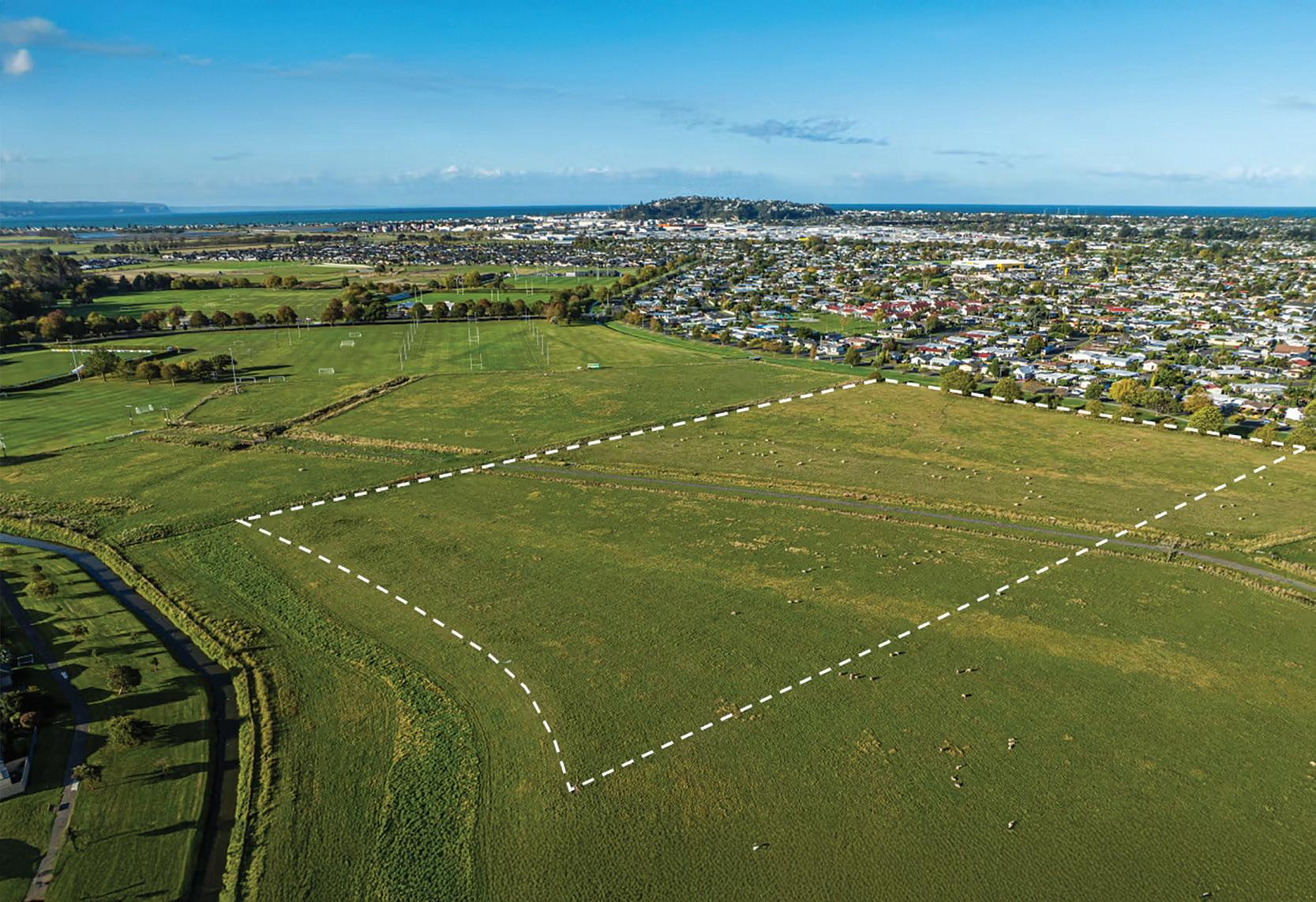
With majestic mountains, rolling green hills, breathtaking coastlines and an abundance of vineyards and orchards it has well and truly earned consideration as one of the top retirement destinations in New Zealand.
The number of New Zealand retirees is on the rise and the demand for retirement villages is rising meet it. According to recent figures from the Retirement Commission: “The proportion of people aged 65 years and older is steadily increasing, from 495,606 in 2006 (12.3 percent) to 715,167 (15.2 percent) in 2018 (Stats.NZ). Long-term projections indicate a 90 percent probability of increasing to 21–26 percent in 2048.”
To help keep up with the need for more senior housing, retirement village operator Metlifecare has purchased a 6-hectare site in the Greenmeadows area of Napier, known as Te Roropipi.

Metlifecare will invest approximately $140 million to transform the multi hectare site at 42 Wharerangi Road into a vibrant new retirement village.
Once complete, the village will offer around 150 single-level two and three-bedroom villas, a premium care home, and resident amenities including a pool, gym, café/bar, library and landscaped outdoor spaces.
Chief Executive Officer Earl Gasparich says the partnership marks an important step in the company’s disciplined, data-led land acquisition strategy.
“This acquisition reflects our ongoing focus on securing highquality, well-located sites that will deliver the best outcomes for future residents and shareholders. Our approach combines detailed demographic analysis, housing market insights, and comprehensive customer research – ensuring every site we add to our landbank has strong long-term potential,” says Mr Gasparich.
“Te Roropipi is an exceptional location for a retirement village – it’s minutes from Anderson Park, Park Island, Greenmeadows New World and just a short drive into Napier city. We’re honoured to be working alongside Mana Ahuriri to create a village that respects the cultural heritage of the area and offers a connected, enriching lifestyle for our future residents.”
The partnership will see both parties work together during the design process, guided by shared values of manaakitanga (care and respect), kaitiakitanga (guardianship) and a commitment to sustainability, including the extensive use of native plantings.
Earthworks are expected to commence before the end of this year, with the first residents anticipated in 2027. The village will bring significant employment opportunities for locals in construction and staffing.
Mana Ahuriri Trust chairman Te Kaha Hawaikirangi said: “This development represents another exciting opportunity as part of our wider property strategy to deliver positive economic, social, and cultural benefits for our hapū and the wider Hawke’s Bay community.
“The sale of just over 30% of the site to Metlifecare is a cornerstone for our wider development plans for Te Roropipi, which will include the development of a commercial retail precinct, and high-quality housing and sections, all being available to our Mana Ahuriri whānau.”
The acquisition brings Metlifecare’s future development pipeline to 21 sites across New Zealand, with the capacity for more than 1700 independent living units and care suites.

On the remainder of the 17hectare site, Mana Ahuriri is planning residential development, with some retail aspects and roading infrastructure.


Small changes, big impact Your guide to a zero-waste kitchen
By Jamie Quinn
The idea of a “zero-waste kitchen” can sound a bit intimidating. It’s not about doing everything perfectly.
It’s about making small, thoughtful choices that help cut back on waste, save you money, and create a kitchen that feels good to live and cook in.
Whether you’re ditching plastic wrap for reusable beeswax wraps, finally starting that compost bin, or just trying to shop smarter, every little bit helps. And over time? It adds up in a big way.
There’s a lot to love about a low-waste kitchen. For one, you’ll be sending less to the landfill, which is great for the planet. But there are personal wins, too: when you’re planning meals and buying only what you need, you waste less food (and money). Swapping out single-use plastics for reusable storage options also means less clutter in the cupboards and drawers.
The benefit is that focusing on fresh, whole ingredients instead of pre-packaged stuff naturally leads to healthier meals. You’re not just reducing waste; you’re building a kitchen that supports the kind of life you actually want to live.
Simple ways to cut kitchen waste
You don’t need a fancy system or a minimalist aesthetic to make a difference, just a few habit tweaks. For starters, food waste is a big one.
Try meal planning, storing produce properly, and getting creative with leftovers. Veggie scraps? Great for homemade broth. Overripe bananas? Banana bread. Herb stems? Chuck them in a sauce or smoothie.
Then there’s composting. Even if you’re not a gardener, setting up a small compost bin means your food scraps can go back into the earth instead of the landfill. Bonus: If you are a gardener, your soil will love you for it.
As for packaging, reusable containers are your best friend. Think jars, glass or stainless-steel containers, beeswax wraps, and cloth produce bags. Buy pantry staples in bulk where you can, and always bring your own bags when you shop. It’s one of the easiest switches you’ll ever make.
And don’t toss things just because they look like “waste.” Old jars make great storage. Tired T-shirts can become cleaning cloths. Citrus peels? Pop them in vinegar for an easy DIY cleaner that smells incredible.
Cook smarter, eat better
One of the best ways to go low-waste is by cooking more from scratch. Not only do you skip all the excess packaging, but you’re also in control of your portions, so less ends up in the bin. Eating seasonally and buying local supports farmers, reduces food miles, and often tastes better, too.
Learning how to store food properly is a gamechanger. Wilted greens and spoiled leftovers will be a thing of the past with the right containers and a bit of know-how.
You don’t have to overhaul your life to start living more sustainably. Start small. Choose one swap that feels doable, maybe it’s switching to reusable containers or keeping a little compost bin on the bench. The rest will follow.
Before you know it, you’ll have a kitchen that works harder, wastes less, and feels better to be in. No guilt, no pressure, just practical, planet-friendly habits that stick.
NZ’s PREMIUM AUTOMOTIVE CENTRE
Auto Super Shoppe Greenmeadows is local to Greenmeadows, Taradale, Tamatea, Pirimai, Onekawa and Marewa and we offer courtesy cars or a local pickup and delivery service. 06 844 6171 P: 14 Gloucester Street, Napier 4112 A: Mon - Fri 7:30am - 5:00pm Sat 8:00am - 12:00pm Closed on Sundays, Long Weekends, & Public Holidays
Car Servicing, Warrant of Fitness, Tyres, Brake Repairs, Cambelts, Car Battery, CV Joints, Electrics, Engine Management & Diagnostics and much more.
We also have a battery business that sells Ultra batteries in all things automotive light and heavy, including campers and mobility scooters and marine batteries.


Mandy Keesing

Flourless
Almond butter cookies
Almond butter chocolate chip cookies are easy to make, wholesome, and delicious — plus, they only require 5 ingredients!
These naturally gluten-free treats are so satisfying, you won’t even miss the butter or flour.
Ingredients
• 1 large egg
• 1c almond butter
• 1 tsp Baking soda
• ½ tsp vanilla essence
Gluten free
• 1c chocolate chips
Method
1. Preheat the oven to 180°C. In a medium-sized bowl, whisk the egg until well beaten. Add the almond butter and stir to combine, then mix in the brown sugar, baking soda, and vanilla extract. Stir everything together thoroughly — it might take some effort depending on the consistency of your almond butter. Finally, fold in the chocolate chips until evenly mixed.
Let the cookies cool on the baking sheet for 10 minutes before moving them to a wire rack to cool completely. Enjoy! Serves 12

2. Spoon out portions of the dough, roughly 1.5 tablespoons each, and place them on the prepared baking tray. Lightly flatten each mound with the back of a spoon. If the dough feels a bit oily from the almond butter, you can gently blot it with a paper towel. For an extra touch, press a few chocolate chips onto the top of each cookie if you like.
3. Bake for 10 minutes. The cookies will appear quite soft when you take them out — that’s perfectly normal! If you prefer a crispier texture, bake them for up to 12 minutes.
Serving suggestion:

By Jamie Quinn
Simply delicious

One-pot slow-cooker
Pumpkin & carrot soup
This one-pot slow cooker soup combines pumpkin, carrot, and spinach for a nourishing, easy meal.
Simply toss in the ingredients and let the slow cooker do the work.
Ingredients
• 1kg pumpkin, cut into 2cm pieces
• 3-4 large carrots, cut into 2cm pieces
• 1 bag (120g) baby spinach
• 1 ½ tsp paprika
• 1 tbsp crushed garlic
Method
• 1 tbsp Honey
• 250ml beef or vegetable stock
• Fresh or soy cream to taste
• Boiling water
• Salt and pepper to taste
1. Place the Pumpkin, Carrots and Spinach into slow cooker.
2. In a small bowl or measuring jug, mix together paprika, crushed garlic, honey and stock until dissolved. Pour over vegetables.
3 Top vegetables with boiling water, stop just before covered. Slow cook on low for approx. six hours.
4. With a stick blender, blend soup until smooth. Add salt, pepper and cream to taste.
Serving suggestion: Serve with warm bread. Enjoy!
Serves 4
Serves 4-6
Roasted Cauliflower & chickpea salad
This simple and speedy roasted cauliflower and chickpea salad is sure to impress.
Ideal for lunch or dinner! Enjoy it on its own or serve alongside your favourite protein.
Ingredients
• 1 whole cauliflower, cut into florets
• 1 400g can chickpeas, drained
• ½ red onion, thinly sliced
• 1/4c fresh parsley, roughly chopped
• 3 tbsp dried cranberries
• 1c greek yoghurt
• 2 tbsp fresh dill, chopped
• Olive oil

Serves 4
Method
1. Preheat oven to 200°C fan bake. Arrange the cauliflower pieces on a roasting tray and drizzle generously with olive oil. Season with salt and pepper, then bake in the oven for 20–30 minutes, or until golden and tender. Remove and set aside to cool.
2. When the cauliflower has cooled to room temperature, place it in a large mixing bowl. Add the drained chickpeas, red onion, parsley, and cranberries, then toss thoroughly to combine.


3. Drizzle the salad with half of the lemon juice and zest, followed by a splash of olive oil. Season with salt and pepper to taste, toss to coat evenly, and transfer to a serving platter if desired.
4. For the yoghurt dressing, mix the remaining lemon juice and zest with the Greek yoghurt and half of the chopped dill. Season with salt and pepper to taste, then spoon over the salad.
Serving suggestion:
Garnish with remaining dill and a squeeze of lemon. Enjoy!
Chorizo & pea risotto
This simple chorizo and pea risotto is a no-stress dinner with big flavour.
Smoky chorizo and sweet peas create a delicious balance in every creamy, comforting bite — perfect for a satisfying weeknight dinner.
Ingredients
• 1 tbsp oil
• 200g chorizo, chopped
• 300g arborio rice
• 2 tbsp white wine vinegar
• 1.2l chicken stock, heated until simmering
• 200g frozen peas
• 60g grated parmesan, plus extra to serve
Method
1. Heat the oil in a large frying pan, add the chorizo, and cook until it’s crisp and the oil has been released. Use a slotted spoon to remove a quarter of the chorizo and set it aside for topping.
2. Add the rice to the pan, stirring to coat it in the oil. Toast for a minute, then pour in the vinegar. Once the vinegar has evaporated, add a ladle of stock. Stir and allow it to absorb before adding more. Continue this process for about 20 minutes, until the rice is plump but still slightly firm in the centre.
3. Stir in the peas, parmesan, and the remaining stock. Mix well until the cheese has melted.
Serving suggestion:
Season with black pepper, then serve in bowls topped with the reserved crispy chorizo and a sprinkle of extra parmesan. Enjoy!
Based in Kumeu, New Zealand, we specialize in building tiny homes, granny flats and holiday retreats that redefine comfort, functionality, and style.
We can build onsite or offsite nationwide or International.
With a focus on quality craftsmanship, attention to detail, and personalized service, we ensure that every project reflects the unique needs and preferences of our clients. From initial design concepts to final touches, we guide you through every step of the construction process, making it seamless and stress-free.
Experience the difference with Small Builds –where small spaces lead to big possibilities.
At Small Builds, we stand behind our craftmanship. From the foundation to the finishing touches, we ensure the highest standards of quality in every aspect of our work. Your satisfaction is our priority, and we are committed to delivering excellence in every project we undertake.

WHY CHOOSE US
Whether it's providing extra accommodation for loved ones, crafting a cozy retreat away from the hustle and bustle, or offering a smart investment opportunity, we're here to bring your vision to life.
Council and Building Consents
We look after all council requirements if required.
Eco-Friendly Designs
We prioritize eco-friendly design, incorporating sustainable materials and practices to create healthier homes and a greener future.
Electrical & Plumbing
We handle all aspects of electrical and plumbing, guaranteeing top-tier solutions for seamless functionality and safety across your entire project.
Call us for a no obligation quote or visit us at our showroom in Kumeu Auckland
in the job and your payments. Protect your build and your back pocket. Both parties agree on a price.
deposits payment in our trust account.


Our fully customizable tiny homes are built specifically to suit your needs, wants & budget.


Different design options available.
Options to suit your budget.
Follow current legislation.
Builders guarantee.
Money locked in and secure.
Solar power options.
Screw piles for foundations or timber piles.
Lodging with council processing if you need.
Get in touch today for a free quote, no commitments necessary.
Whether you're seeking a cozy retreat in the countryside, a versatile backyard studio, air b and b for secondary income or a granny flat for family, our tiny homes offer endless possiblities. We collaborate closely with each client, ensuring that every aspect of their tiny home aligns seamlessly with their vision and budgetary constraints. With options available for every budget. m Paul 021378277
Options to build on site or off site and delivery.(delivery costs tbc)
Showroom
HAMPTON

The walking practice that’s gentle, powerful and proven Beyond 10,000 steps
By Paige O'Brien
While the world becomes more and more obsessed with high-intensity workouts, a gentle yet highly effective approach to fitness is gaining popularity.
Known as Japanese walking, this structured method is a simple, science-backed way to improve cardiovascular health, build strength, and support mental wellbeing.
Unlike traditional walking routines that emphasise distance or step count, Japanese walking, also technically referred to as interval walking training (IWT), is based on alternating periods of brisk walking with periods of slow recovery walking. Originating from Japan and developed by Dr. Hiroshi Nose at the Shinshu University Graduate School of Medicine, this method was specifically studied among people aged 40 to 75. Its results have reportedly impressed researchers and public health experts alike.
What is Japanese walking?
Japanese walking is a timed method of walking that alternates between three minutes of fast-paced walking and three minutes of slower walking, typically over a 30-minute session. The brisk walking phase should be vigorous enough to raise your heart rate to around 70-85 percent of your maximum. During this phase, you should feel slightly breathless, able to speak a few words, but not hold a conversation. Then comes the slow-paced interval, giving your body a chance to recover.
The cycle is repeated five times to complete the full session, and ideally performed four times per week to gain the full benefits. Unlike continuous walking, which maintains a steady pace, the interval structure of Japanese walking is key to its effectiveness. It creates periods of physical challenge followed by rest, which helps the body adapt and grow stronger.
Why it works
One of the most appealing aspects of Japanese walking is that it has significant health benefits without putting unnecessary

strain on joints, muscles, or the cardiovascular system. As we age, finding a form of exercise that is both safe and effective becomes more and more important, and this method ticks both boxes.
Cardiovascular fitness
Studies show that Japanese walking improves aerobic capacity, which is a major predictor of longevity and heart health. Even adults in their seventies showed marked improvements after regular training using this method.
Improved strength and balance
The brisk intervals help build leg strength, boost muscular endurance, and improve balance. These are key for preventing falls, one of the leading causes of injury and loss of independence among older people.
Weight control and fat loss
Due to its interval nature, Japanese walking increases calorie burn and stimulates the metabolism more effectively than steady walking. Over time, this can support a healthier weight and body composition.
Mental clarity and mood elevation
The rhythm of the intervals, paired with fresh air and gentle movement, makes Japanese walking an effective way to reduce anxiety and lift mood.
How it compares to the 10,000 steps myth
Many people still cling to the idea that 10,000 steps a day is the magic number for health. But that figure actually originated from a Japanese marketing campaign in the 1960s. Modern science suggests that walking quality, not just quantity, matters more.
A recent Japanese study found that participants who engaged in interval walking saw greater health benefits than those who


simply walked continuously for the same amount of time. So while total daily movement remains important, integrating intentional bursts of intensity makes a real difference.
How to get started
If you are new to structured walking or haven’t exercised in a while, it's best to ease into this method gradually. Begin with short sessions, perhaps 20 minutes, and build your way up to the full 30-minute routine.
Use the “talk test” as a guide. During the brisk phase, you should be able to talk, but not sing or hold a full conversation. In the slower phase, you should feel comfortable and relaxed, allowing your body to recover.
No special gear is needed beyond comfortable walking shoes and suitable clothing. Choose flat, safe routes like walking tracks, parks, or quiet suburban streets. A timer or walking app can help you track your intervals until the rhythm becomes second nature.
As always, check in with your GP before beginning any new exercise programme if you are unsure, especially if you have a history of heart issues, joint problems, or are currently managing a health condition.
Walking towards longevity
Incorporating Japanese walking into your weekly routine could become one of the most sustainable and enjoyable health investments you’ll have made in recent years. Beyond the physical benefits, this method also promotes discipline, mindfulness and routine, qualities that massively contribute to overall wellbeing in retirement.
So the next time you’re out for a stroll, consider giving this walking method a try. With its roots in scientific research and showing results of greater strength, balance, and longevity, Japanese walking may be the perfect step forward.

Dry in hours. Cleaner for longer.
Our unique hot carbonation extraction cleaning process lifts dirt deep from your carpets and upholstery.
The result? A deeper clean that dries in hours, not days.

Embracing the unexpected
By Jonathon Taylor
How spontaneity can benefit your health
In today’s structured, schedule - driven world, spontaneity might seem like a luxury — or even a distraction.
But research shows that embracing the unexpected may actually be good for your health. Far from being frivolous, spontaneous behaviour has been linked to enhanced mental wellbeing, greater emotional resilience, and even improved cognitive functioning.
Clinical psychologist Katina Bajaj explains that stepping outside of rigid routines can offer powerful psychological benefits. “Surprise and novelty can actually be therapeutic,” she says. “The more spontaneous and creative experiences we have, the happier, fulfilled, and even successful we become.”
Spontaneity, especially when it involves trying new activities or breaking away from predictable habits, can activate areas of the brain associated with learning, problem-solving, and memory. In particular, it promotes divergent thinking — a mental process essential to creativity and innovation.
Even our perception of time is influenced by how we engage with life. Neuroscientist David Eagleman has noted that new and unplanned experiences force the brain to process more information, which can make time feel richer and more meaningful. This contrasts with the sensation of time “flying by” when life becomes a series of repetitive tasks. In this sense, spontaneous experiences not only enrich the moment but also help us feel more present and aware.
On a neurochemical level, spontaneity can trigger the release of dopamine, a key neurotransmitter that plays a central role in motivation and mood. These brain responses help explain why impromptu decisions — whether it’s a last-minute coffee with a friend or an unplanned walk in the park — often leave people feeling refreshed, energised, and emotionally uplifted.
There’s also growing evidence that spontaneity supports emotional resilience. Dr. Xiangyou “Sharon” Shen, a researcher at Oregon State University, has studied the impact of playful spontaneity during periods of intense stress, such as the COVID-19 pandemic.
Her research found that people who embraced a playful and spontaneous outlook — what she calls “lemonading”— were more optimistic, adaptable, and creative in how they approached challenges. “They imagined future possibilities with greater optimism,” Shen notes, and were better equipped to “turn lemons into lemonade.”
Further reinforcing this, studies in psychodrama and personality psychology have shown that spontaneous behaviour correlates positively with well-being and negatively with anxiety, depression, and obsessive thinking. Researchers suggest that individuals who allow themselves to act authentically and flexibly in the moment are more likely to experience higher selfesteem, better coping skills, and greater life satisfaction.
Spontaneity, then, is not about carelessness or a lack of structure — it’s about allowing space for curiosity, play, and meaningful connection. When embraced mindfully, it becomes a powerful tool for enhancing emotional health, building resilience, and adding richness to everyday life.
As Bajaj puts it, “It’s in those moments of freedom — when we allow ourselves to explore without a plan — that we often find the most joy.”
Your Local Village Club
The best view in the Bay!
With annual membership fees starting from $115, you will enjoy full bar facilities at member prices, regular entertainment, and weekly Club night with membership draw, plus a range of special interest groups including Snooker, Darts, and 8 Ball.
Big screen TV means you can watch your choice of sport live.
All members, affiliated visitors and customers welcome.


Membership Benefits:
• Restaurant (Thursday to Friday, 5.30pm-8.00pm)
• Regular entertainment, including quiz nights, music and special events
• Members Night every Thursday, including membership prize draw and raffles
• Full bar facilities
• Big screen TV for live sports coverage
• Snooker, Darts, Indoor Bowls and 8 Ball

06 877 8722 office@villageclub.co.nz 8 Campbell Street Havelock North www.havelocknorthvillageclub.nz
Good reads The books captivating the Plusliving office

Jessica recommends
Butter by Asako Yuzuki, translated by Polly Barton
Part true crime, part love letter to fine dining, this gripping international bestseller is sure to make you hungry. The character-driven novel follows journalist Rika, whose interviews with passionate cook and convicted murderer Kaaji lead her on a journey of self-discovery. What starts as a conversation about butter evolves into a deeper exploration of identity and womanhood in modern society.
Kyle recommends
Atomic Habits by James Clear
For anyone hoping to develop or maintain healthy habits, this book is worth your time. It topped the New York Times best-seller list for 164 weeks after all. Habit researcher James Clear shares how it’s systems, not personal flaws, that shape habits. He explains that every habit follows a loop: cue, craving, response, reward. Focusing on small, consistent improvements — getting 1% better every day — leads to major change over time.

Jamie recommends
We Solve Murders by Richard Osman
Steve Wheeler is enjoying retired life. His days of adventure are over: adrenaline is daughter-in-law Amy’s business now. She’s currently on a remote island keeping world-famous author Rosie D’Antonio alive. Which was meant to be an easy job... Then a dead body, a bag of money, and a killer with their sights on Amy have her sending an SOS to the only person she trusts. A breakneck race around the world begins, but can Amy and Steve stay one step ahead of a lethal enemy?
Caro recommends Pillars of the Earth by Ken Follett
A spellbinding epic tale of ambition, anarchy, and absolute power set against the sprawling medieval canvas of twelfth-century England, The Pillars of the Earth is Ken Follett’s classic historical masterpiece. The historical novel, published in 1989, weaves together the lives of nobles, clergy, builders, and outcasts, exploring themes of ambition, love, power, and faith. It was made into an 8-part television miniseries in 2010 and a video game in 2017.

Ben recommends Poetry Aotearoa Yearbook 2025 edited by Tracey Slaughter
The Yearbook is essential reading for all New Zealand poetry fans. For the 2025 edition, editor Tracey Slaughter has once again hit the zeitgeist in her selection of 141 new poems from an exhaustive submission process. Another packed issue, #59 showcases the raw and the vital, including from this year’s featured poet, Mark Prisco, a blistering introduction from Slaughter herself, and excellent reviews of a crop of recent poetry books.





At our clinic in Napier, every denture is custom made by Marco. With over 30 years of expertise, he only uses high-quality materials to ensure each denture is designed for comfort, durability, and a natural appearance.
From your first consultation to your finished smile, you’ll receive the care, confidence, and support you deserve.
We provide a full range of options:
• Full dentures
• Partial & metal partial dentures
• Implant-retained dentures
• Immediate dentures
Additional services:
✓ Relines
✓ Same-day repairs
✓ Free consultations
✓ WINZ & insurance quotes available
06 650 7368 022 368 1052 /denturesnapier
120 Shakespeare Road Bluff Hill, Napier artisandentalstudio.nz@gmail.com
Mind Games
The old saying ‘use it or lose it’ applies as equally to mental acuity as it does to physical wellbeing, and more so as we age.
With people progressively living longer lives, it is increasingly important to look after our mental health. So here are some activities for the mind… brain food for improving your state of mind.
Geography
Wordsearch
These words may go horizontally, vertically, diagonally, not backwards. The remaining letters will spell one more hidden geography term.
HIDDEN:
ANSWERS:
RULES: Sudoku rules are simple. A 9×9 square must be filled in with numbers from 1-9 with no repeated numbers in each line, horizontally or vertically.
To challenge you more, there are 3×3 squares marked out in the grid, and each of these squares can't have any repeat numbers either.
ANSWERS:
Test your speed-reading
Reading quickly is a valuable skill, but one must read fast and comprehend well to achieve it.
Time how fast you can read the passage below, then answer the questions below to test your comprehension to see how well you can speed read!
Start your timer!
Speed reading is not just racing through a passage. Once honed, it becomes a powerful technique that, when combined with effective comprehension strategies, can significantly enhance your cognitive abilities — not only in reading but also in learning other new skills. At its core, speed reading involves training your eyes and brain to process information more efficiently, minimising habits like subvocalisation — where you “say” words in your mind as you read. By practising methods such as using a pointer or finger to guide your eyes, expanding your peripheral vision, and chunking words together, you can increase your reading speed while still understanding the material and even enjoying the process more.
Comprehension is the critical companion to speed. Without it, reading quickly becomes meaningless. Focus on active reading strategies: preview the text by skimming headings and subheadings, ask yourself questions about the content before diving in, and summarise key points after each section. This improves recall while also encouraging deeper, critical thinking. This approach keeps your brain engaged and helps you retain more information. Over time, these habits strengthen your cognitive abilities, making it easier to process complex ideas and remember important details.
Combining speed reading with comprehension exercises creates a virtuous cycle for your brain. As you challenge yourself to read faster and understand more, your brain adapts by forming new neural connections. These adaptations support lifelong learning and mental resilience. It’s like a workout for your mind, just as physical exercise builds muscle, reading efficiently builds cognitive strength. Studies suggest that people who regularly practice speed reading and comprehension techniques experience improved memory, sharper focus, and enhanced problem-solving skills.

By Ben O’Connell
Whether you’re a student, professional, or lifelong learner, these skills empower you to absorb vast amounts of information quickly and effectively. By incorporating these strategies into your daily routine, you can unlock your brain’s full potential, remain mentally agile, and keep pace with the ever-growing demands of the information age.
Stop your timer!
Answer these true or false statements to ensure you understood the passage.
1. Skimming headings is a bad speed-reading strategy
2. Subvocalisation is a habit where you mentally say words as you read
3. The passage compares speed-reading to racing a speedy car
4. Memory, focus, and problem-solving improve with speed-reading skills
5. The passage describes speed-reading as ‘valuable’ for the brain.
The odd-numbered statements are false, whereas the evennumbered statements are true. If you answered all five questions correctly and took one minute or less to read the passage, you are an excellent speed reader. The passage has 319 words, but the average reader reads about 240 words per minute. If you took over three minutes to read the passage, its advice might be worthwhile to you! Speed-reading is a valuable skill, but ultimately, reading is to be enjoyed at your own pace.

Looking at vans? Start with one that’s built to last.

At East Coast Caravans, we’re here for the long haul - offering full servicing, expert advice, and after-sales support that lasts well beyond handover.






By Jonathon Taylor
Going it aloneLoneliness among older New Zealanders reaches crisis levels
A recent study has revealed that loneliness and social isolation among older New Zealanders has reached epidemic proportions, prompting calls for urgent government intervention.
Health advocates are urging the establishment of a dedicated Minister for Loneliness to coordinate national efforts to address this growing health and social crisis, mirroring successful models implemented in countries such as the United Kingdom and Japan.
The Breaking Barriers report, commissioned by Age Concern Auckland, surveyed older adults across Auckland and the Bay of Plenty to better understand the root causes and consequences of social disconnection among people aged 65 and older.
The findings paint a concerning picture: 59% of respondents reported recent feelings of loneliness or social isolation, with nearly one-third (30%) stating they experienced these feelings frequently or constantly.
According to the study’s authors, loneliness among older people is not simply an emotional issue — it is a public health concern. The research reveals that social isolation is closely tied to a range of negative health outcomes, comparable in severity to smoking, alcoholism, and obesity. Kevin Lamb, Chief Executive of Age Concern Auckland, says the impact of chronic loneliness is farreaching and damaging.
“The level of loneliness and social isolation among older people across the country is severe and has a significant detrimental impact on the lives of many vulnerable New Zealanders,” Lamb says. “This impact is of a similar negative level as smoking, alcoholism, and obesity — not only on individuals but also on our communities and health system.”
The report identifies a complex web of contributing factors. Financial insecurity plays a key role, particularly for those coping with the rising cost of living on fixed or limited retirement incomes. Health-related challenges also contribute significantly.
Long wait times for elective procedures, the rising cost of private health insurance, and the stress of navigating health services all impact older people’s ability to remain socially engaged.
Housing issues also emerged as a major driver of isolation. Many older New Zealanders, particularly those living in social housing, face unsuitable or substandard living conditions.
The study found that 70% of social housing residents reported loneliness, the highest rate among all accommodation types. Limited mobility, inadequate accessibility, and poor housing quality frequently leave older adults feeling trapped in environments ill-suited to their changing needs.
Globalisation and shifting family structures have further compounded the issue. The study notes that many older adults, especially in Auckland, have become geographically and emotionally isolated from loved ones due to adult children relocating overseas.
Alarmingly, 44% of Auckland’s older population are migrants who moved to New Zealand to be near family, only to experience renewed isolation as their children pursue opportunities elsewhere.
Technology, often proposed as a solution to loneliness, may not offer the protection it promises. The study found that 75% of older adults who use social media still experience loneliness.
In fact, those who rated themselves as “very proficient” with smartphones were more likely to feel isolated than those without access. Researchers suggest that digital interaction may lack the emotional nourishment of face-to-face connection and may even amplify feelings of exclusion.
Age Concern Auckland is now calling for the creation of a Ministerial Lead for Loneliness in New Zealand. This role would coordinate national policy, support services, and awareness initiatives aimed at reducing social isolation.
“This is a hidden epidemic, and it requires a visible, co-ordinated response,” Kevin says.

Alarmingly, 44% of Auckland’s
older population are migrants who moved to New Zealand to be near family, only to experience renewed isolation as their children pursue opportunities elsewhere.
“A Minister for Loneliness would be charged with shaping policies, funding mental health services tailored to older adults, and working across government and community sectors to develop inclusive, age-friendly environments.”
International examples support this approach. In the UK and Japan, dedicated loneliness ministries have helped implement nationwide strategies, raise public awareness, and support at-risk populations.
A similar role in New Zealand could oversee targeted initiatives for rural communities, Māori elders, and migrant populations — groups who, according to the report, are at heightened risk of isolation.
The report also calls for increased funding for mental health support tailored to older adults, expansion of community-based initiatives such as social clubs and volunteer programmes, and stronger anti-ageism campaigns to combat negative stereotypes and promote intergenerational connection.
In rural areas, the challenge is even greater. Over one-third (34%) of Māori kaumatua live in rural regions, compared to just 20% of the general rural population.
With fewer services and a higher older-age dependency ratio in these areas (35 per 100 compared to 23 per 100 in urban settings), Māori elders face serious disadvantages in accessing support.
The Breaking Barriers report serves as a wake-up call to government, health providers, and communities alike.
With an ageing population and widening social gaps, the time for a coordinated, compassionate response is now. Ensuring that older New Zealanders feel valued, connected, and supported is not only a moral imperative — it is essential to the health and wellbeing of our society.

Scam fears keep older Kiwis offline
By Jonathon Taylor
One in four New Zealanders aged over 65 are now reluctant to go online due to fears of being scammed, according to new research from BNZ.
This figure has nearly doubled from 13% three years ago, highlighting growing unease among older adults. The trend is raising concerns about digital exclusion, especially as more everyday activities move online.
The research, released as part of Fraud Awareness Week, highlights a sharp difference in attitudes between age groups. While 25% of those over 65 express online hesitancy due to scam fears, only 10% of under-35s share the same concern. However, the findings show that older people are not necessarily more likely to fall victim to scams. This suggests that fear — rather than actual risk — may be discouraging older New Zealanders from using digital services.
Ashley Kai Fong, former BNZ’s Head of Financial Crime, says this trend presents real challenges in today’s connected world.
“When older people avoid the internet because of fear, they miss out on valuable things like easier banking and staying in touch with loved ones through video calls,” he says. “As more essential services move online, we must ensure everyone feels confident taking part.”
There is a bright spot: the research shows that 96% of New Zealanders over 65 have recently seen information on how to avoid scams.
“That’s encouraging,” says Kai Fong. “But it’s important that this information builds confidence, not fear.”
“Our aim isn’t to discourage technology use, but to help people use it safely and with confidence. With so much now happening online, from banking to government services, staying connected is more important than ever.”
To support this, BNZ’s Scam Savvy programme offers practical advice and updates on new scam tactics, helping customers protect themselves and use digital tools more confidently.
"Digital inclusion is about more than just having internet access - it's about having the confidence to use it safely. At BNZ, we’re doing our part to better educate New Zealanders about the risk of scams, what to look out for and how to keep yourself safer online," says Kai Fong.
Staying safe online
Be cautious with unsolicited messages
• Don’t click on links or open attachments from unexpected emails or texts
• Never share personal information (like passwords or bank details) via email, text or phone unless you’re 100% sure who you’re dealing with.
Use strong, unique passwords
• Create long passwords using a mix of letters, numbers, and symbols
• Use different passwords for different accounts
• Consider using a password manager to keep track securely.
Enable two-factor authentication (2FA)
• Add an extra layer of security by turning on 2FA for important accounts like email and banking
• This usually means entering a code sent to your phone or using an app after entering your password.
Keep devices and software up to date
• Regularly update your computer, phone, and apps to patch security vulnerabilities scammers might exploit
• Install reputable antivirus software and run regular scans.
Know the warning signs
• Be suspicious of messages that create urgency, ask for money, or sound too good to be true
• Scammers often pretend to be from banks, government agencies, or family members in trouble — if in doubt, contact them through official channels.





Unlocking build-to-rent housing
The Property Council, whose members are some of New Zealand’s largest property developers, owners and investors, has come out in support of the government’s Build to Rent tax exemption boost.
Property Council New Zealand chief executive, Leonie Freeman, says the initiative could mark a key turning point towards unlocking the potential of Build to Rent.
“Our members share the government’s view that enabling Build to Rent will provide warm, dry rental homes that offer Kiwis long-term security of tenure.
“It is encouraging to see that the government has listened to our sector and acknowledged Build to Rent as a unique property asset class.
“The government’s announcement is a major step towards boosting New Zealand’s emerging Build to Rent sector.
“Build to Rent will transform the experience of renting in New Zealand.
“Property Council research shows that our members stand poised to deliver over 25,000 Build to Rent homes in the next decade, with the right policy settings.
“Build to Rent refers to multi-unit residential developments, typically located in city centres within walking distance of key transport links.
“These developments are professionally managed, with brilliant amenities available onsite, offering residents bespoke lifestyle options for as long as they want to stay.
“By enabling Build to Rent, the property sector will be able to deliver thousands of new high-quality, high-density rental houses, supporting New Zealand’s urban intensification and climate ambitions.
“Kiwis will hopefully soon have many choices to access to a warm, dry and climate friendly Build to Rent home.
“Over the past 18 months, the Property Council has been working closely with the government to highlight the untapped potential of Build to Rent and explain the legislative actions required to enable it.
“As part of this, we have collaboratively resolved the unintended consequences of last year’s interest deductibility changes.
“While the announcement has been a fantastic step in the right direction, there are a few remaining speedbumps to truly unlock the concept.
“For Build to Rent to flourish, access to large institutional investment via the overseas investment act and commercial depreciation is also required.
“The Property Council looks forward to continuing our engagement with the government to support the roll out of the world’s fastest growing residential sector in Aotearoa.”

Property Council research shows that our members stand poised to deliver over 25,000 Build to Rent homes in the next decade, with the right policy settings.
Professional Property Managers in Hawkes Bay
Covering the Napier and Hastings broader areas.

Why choose us?
At Robert’s Property Management our priority is to optimise your rental investment. This means more than just collecting rent. It means offering a complete, personal service that pays careful attention to important services like tenant selection, maintenance and regular inspections. We pride ourselves on very high occupancy rates, due to our dedication and our quick response to the market. We would love to assist you to improve the performance of your property or portfolio.
We offer:
A specialised, customised property management service
Comprehensive tenant selection, a zero rent arrears policy, excellent systems in place
Regular rent reviews
We offer a flat fee with no hidden costs and our fees are very competitive!
We are property investors too We use the latest technology (cloud, which means you can access your info …)
Free Regular inspections
We encourage open communication. We are here to listen to you. You can choose how involved you would like to be in the management of your property.
About Us
Robert’s Property Management is a professional property management company based in Hawkes Bay. Situated on the sunny shores of Napier. Roberts Rentals provide their services across Napier and Hastings area.
Proactive, reliable and friendly, the team at Roberts Rentals are small but dedicated to ensuring their landlords and tenants alike receive an exemplary client experience. Understanding the key factors of a customer-centric business such as property management is vital.
Communication, industry and legislation knowledge, and empathy are not-negotiable. We pride ourselves on a very high occupancy rate achieved due to our dedication and speed of service we provide to the market.
Our promise to you.. “we will never put someone in your property that we wouldn’t put in one of ours”. This is a core difference between us and other property managers.

Established in 2011.



What to look for in a real estate agent
Your home is often your largest personal asset, so selling it can be both exciting and stressful at the same time.
That’s why having an agent that you can trust to help you achieve the best price and conditions possible for your home – all while being transparent and ensuring all parties are comfortable and aware of the processes, will make a big difference.
Certain attributes differentiate a great agent from a good agent. We recommend that you look for agents who demonstrate a great deal of professionalism, local knowledge and have a good reputation.
Look for someone who understands the kind of people who will be interested in your home. This will help with the marketing of your home and communicating the benefits of your property to potential buyers.
Local agents often have a network of potential buyers that they have been working with or regularly communicate with, who are ready and able to provide the best price for your home.
Great real estate agents are well connected, therefore asking family and friends if they know an agent they would recommend is a great start; referrals are often the best way to find an agent with a proven track-record, and not just someone who knows how to say the right things at the right time.
When asking for recommendations, remember to ask what factors their recommendation is based on. Did they get the level of communication they wanted? Did they think the agent used the marketing spend effectively? Did they manage any challenges through the process well?


Great real estate agents are well connected, therefore asking family and friends if they know an agent they would recommend is a great start; referrals are often the best way to find an agent with a proven track-record, and not just someone who knows how to say the right things at the right time.
Agents are usually more than happy to come to your property, share their knowledge and talk you through your options for selling. We recommend meeting a few agents before you choose who to work with.
Try visiting open homes they are hosting to understand how they present their vendor’s property. This will help you get a feel for how they will work to get the best for your property.
Take a look online and see how agents are using social media and digital marketing to increase coverage for the properties they are selling, and therefore see what you could expect for your home. Many agents will also use advanced technology to help market and sell your home, which can often reach a broader audience, for example:
• Virtual Reality tours or 3D walkthroughs are one of the options that increase the accessibility of an open home to a wider range of potential purchasers in the first instance, particularly out of town buyers
• Augmented Reality is another option that can help potential purchasers rework the layout of furniture in the home, so they can better picture themselves and their belongings in the home.
Try not to select an agent based solely on their commission fee, but it is important to understand what the fees are. While these do vary by agency, our advice is to choose an agent you trust and whose previous work gives you confidence.
Great agents can achieve a better price for your property by understanding the best strategies according to different market conditions.
At the end of the day, the person you choose is going to be a big part of your life while you sell your home, so it is important that you feel comfortable with them and that you can trust them to get the job done.
Hawke’s Bay
PASSIONATE ABOUT PEOPLE & PROPERTY.
Getting ready for the festive fun! Tania and daughter Chelsea are excited to take part in the Harcourts Christmas Parade.

Selling a home can feel like a big step, especially when it’s a place filled with memories. That’s why having someone you can truly trust beside you makes all the difference. Tania Goldfinch is not only one of Hawke’s Bay’s leading real estate agents, she is also known for the kindness, patience, and genuine care she shows to everyone she works with.
Her calm and gentle approach, combined with clear and open communication, helps take away the stress and uncertainty that can come with moving. Tania has been recognised 3 years in a row with the RateMyAgent Customer Service Award for Taradale – an honour that reflects the respect and trust she has earned by always putting people first.
For Tania, it’s never just about selling a property. It’s about looking after people, making sure they feel supported, safe, and informed every step of the way. With her guidance, you can feel confident that you are in caring and capable hands.
Key Achievements:
• Rate My Agent #1 Agent in Taradale – 2023, 2024, 2025
• Regent Realty’s Top Individual Agent in Hawke’s Bay – 2023, 2024, 2025
• 50-Million-Dollar Club
• Gold, Ruby & Diamond Pin Awards

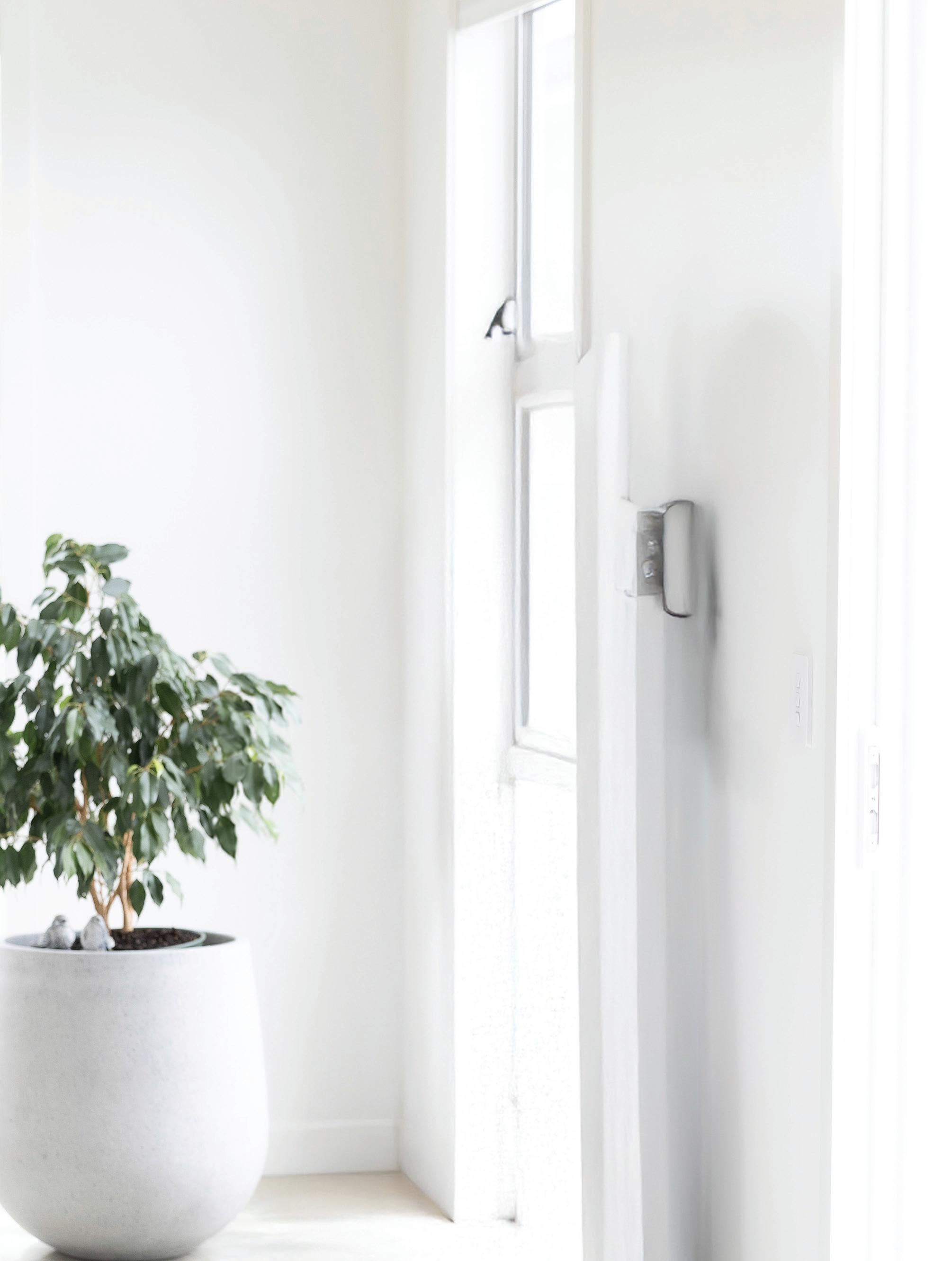
Tania GOLDFINCH


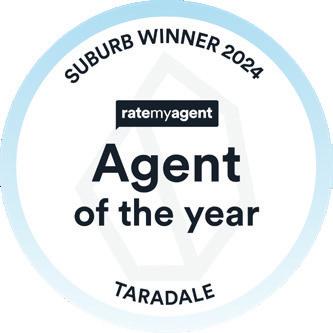







Have you considered buying or selling a property? Or do you know of a family member, friend or colleague who is considering buying or selling a property? Contact now to experience next level service.

My passion and enthusiasm for real estate, our community and surrounds has given me drive to provide the best knowledge and gain the highest results for my vendors and purchasers.
I was born and raised in Central Hawkes Bay and feel that having a deep understanding of the local area is a key advantage when it comes to selling real estate. I am equipped with extensive knowledge of the district, amenities, schools, and shopping facilities. This allows me to effectively highlight the unique selling points of your property and provide potential buyers with accurate information.




“Chrystall Lorck-Paewai was amazing through the entire marketing, open home, and sales process. Clear communication, honest, and a true professional in every respect. Always going the “extra mile”, I would recommend anyone considering buying or selling a home to get in touch with Chrystall. She’s a new, bright shining star at Property Brokers, and an absolute delight to work with. Thanks again Chrystall, from a very happy Smith family.”
Caleb Robinson TeaM


Last year we successfully sold over 50 properties*...
COULD YOURS BE NEXT?





























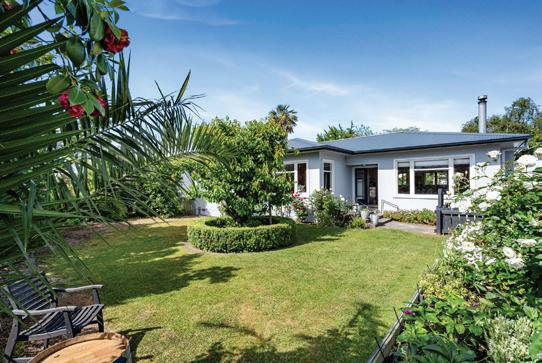


“From when we used Caleb to purchase our home back in 2017, we knew that when the time came he would be the agent we contacted first when it came to selling. We were impressed with Caleb and his team from the first interaction. The quick responses and timely answers to our queries stood out - but more importantly helping us through the process of listing including managing expectations and helping us gain an understanding of the market at the present time. We are looking forward to working with Caleb and his team again when we next look to change houses, as the experience has been seamless for us!”
MICHAEL & SHANNON, VENDORS
5 McKay Close 16A Everest Avenue
Reynolds Road
Grove Road
Kingsgate Close
Burbury Ridge
Aintree Road
Drovers Way
Red Hills Road
Omaranui Road
Lochhead Street
Russell Robertson Road
Magdalinos Way


Take the time to talk about your funeral
By Gillian Boyes, Chief Executive, Funeral Directors Association of New Zealand
At many funerals these days, you’ll see a photo tribute or hear specially chosen music that reflects the person who has died.
But have you ever thought about the photos or music you’d want, or want for a loved one? Preparing these details can be a gentle way of beginning the planning for a final farewell and has the added bonus of helping you re-live many happy memories as you begin the sorting process.
If you’ve been wondering how to start here’s some more ideas to talk about with your family.
Think
about where you’d
like your funeral
to take place - Chapels and churches are still popular but increasingly people are opting for highly personalised approaches.
Has a certain sport or interest been a big part of your life? Perhaps your funeral could be at your sports club or the club rooms of your interest group.
Love your garden, the beach, your local park? You could have a special ceremony there (your funeral director will let you know of any local council requirements).
Your cultural traditions may dictate the venue. Funeral directors can work within those requirements too.
Your venue might dictate whether you have a funeral (with the body present) or a memorial (with ashes). Both options offer the opportunity for your family and friends to gather and remember which is a key part of their grieving process.
Consider whether you prefer burial or cremation
While there are other options too such as burial at sea or donating your body to science, burial on land and cremation remain the most popular choices for most New Zealanders.
If you prefer a burial, some councils allow you to pre-purchase a burial plot which can help you avoid ever increasing cemetery charges.

Consider your casket choice - Caskets these days come in the widest possible varieties. Prefer something simple? An MDF, or plain casket your family can decorate themselves might be for you.
Want to think sustainably? Solid wood options might befit you, or consider a felted wool or wicket casket which might also reflect a love of nature. Shrouds are another option particularly for natural burials. Casket makers can also offer bespoke options including beautifully carved coffins and couches, or special wraps with your favourite image or colour. Yes we’ve even seen a donut themed casket.
Many people find it reassuring to know a deceased body is treated with the highest respect and care at a funeral home. You might have other questions you’d love to ask, so look out for local open days at funeral homes. People find these absolutely fascinating and taking away some of the mysteries about what goes on can also take away the fear.
Get your paperwork in order - A really important gift you can give to your family is having your paperwork in one place. This includes your will but also details that’ll help them close off bank accounts, utilities and even social media. Make sure that if you’ve organised a funeral pre-payment that details of that are included with that paperwork. We’ve sometimes had to follow-up and refund families who had no idea mum or dad had already paid.
A final paperwork tip is to make sure your immediate next-ofkin details are included with your important papers – these are important for death registration.
Talk with your family about what’s important for them
- Remember that while you might not want a fuss, your funeral is a time for your family and friends to grieve for you. Coming together, hugging, looking at those wonderful photos or listening to the songs you loved will help them as they come to terms with living without you.
Writing down what you decide, or asking your local funeral home to capture the details in their system so they don’t get mislaid will mean that when the time comes, your special people are left with peace, not decisions.
Taradale | Napier | Hawke’s Bay
Your trusted funeral experts

About Us
Our experienced funeral directors are caring, professional and dedicated to designing a personalised funeral service to suit your family’s individual needs.
The funeral home encompasses the contemporary styled Sugar Loaf Chapel, aptly named after the iconic local landmark; it is the gem of the funeral home.
Our Facilities and services include
Sugar Loaf Chapel & Refreshment Lounge
Viewing Room
Family Meeting Room
Casket & Urn Showroom
On Site Mortuary
Car Parking
Wheelchair Access
Service Sheets
Memorial Book
Livestreaming
Memorial Jewellery
Photo Slideshows
The Sugar Loaf Chapel




Pre - Arrangement & Pre paid
At Howard & Gannon Funerals, we offer pre-planning and pre-payment options designed to ease the emotional and financial burden on your loved ones. Our comprehensive Funeral Planning Guide can help you explore meaningful ways to celebrate your life, in a manner that reflects your values and wishes. With our easy-to-complete Pre-Arrangement Form, you can ensure your preferences are clearly recorded giving both you and your family peace of mind for the future.
Talking with your loved ones about your end-of-life wishes is one of the most meaningful gifts you can give. Whether you’re ready to make plans or simply want to explore your options, our caring team is here to guide and support you every step of the way. We’re Here to Assist You





